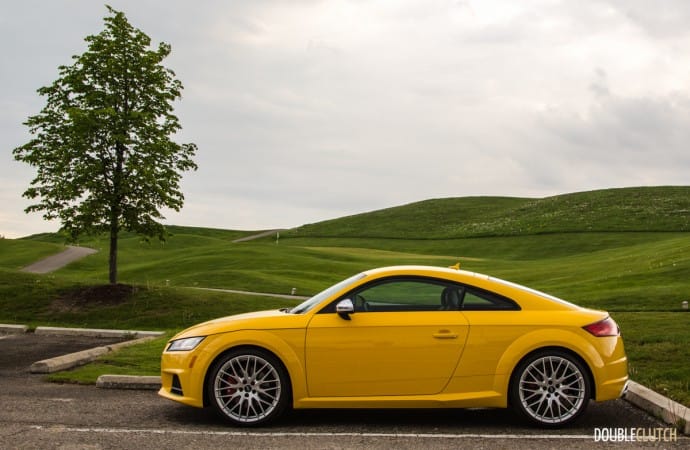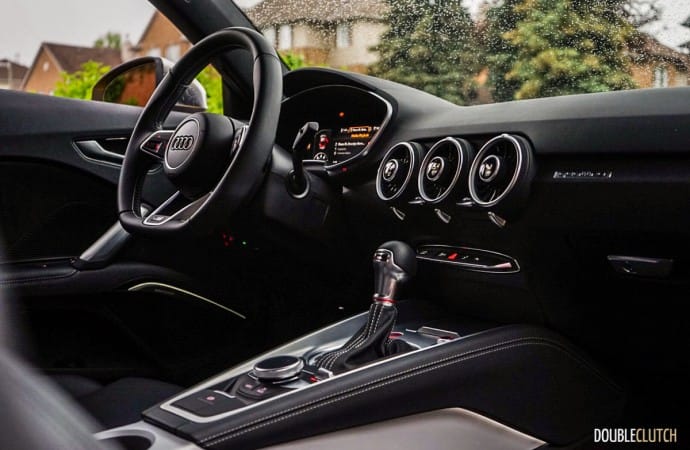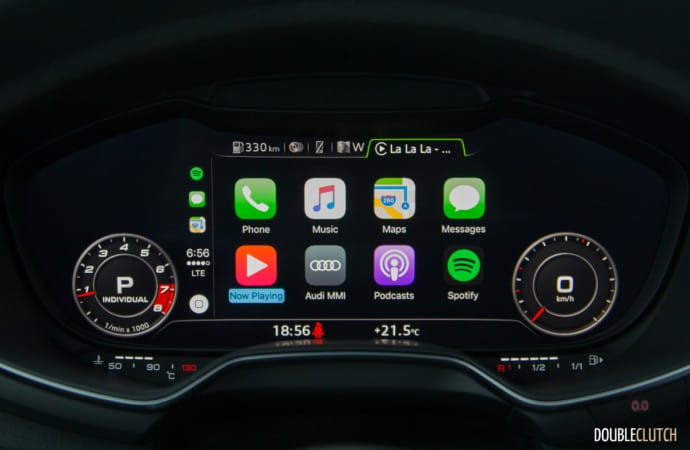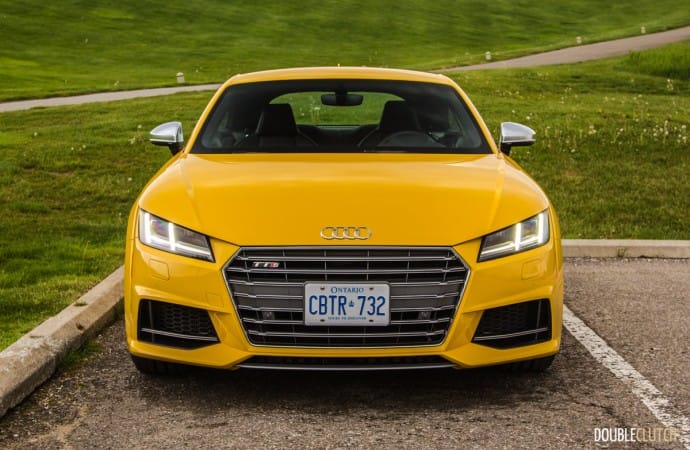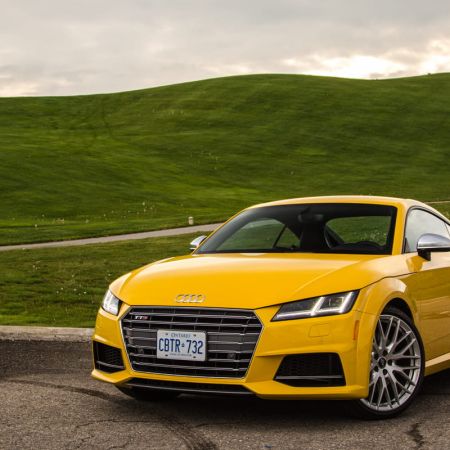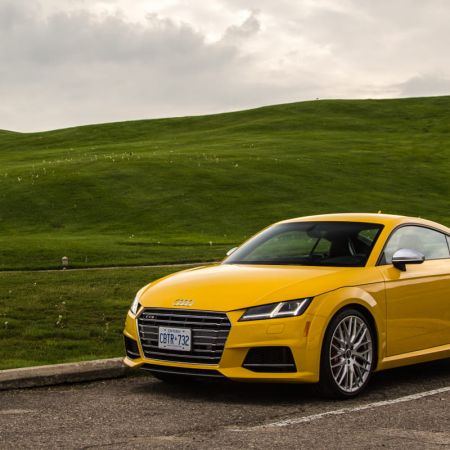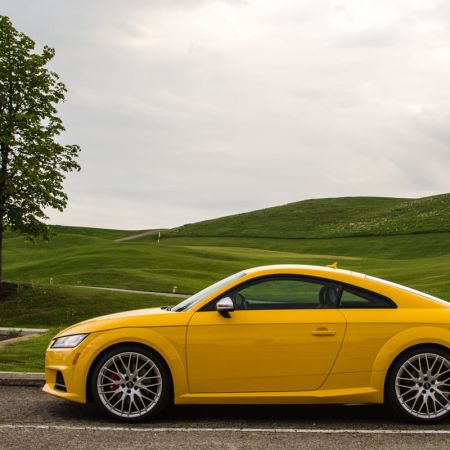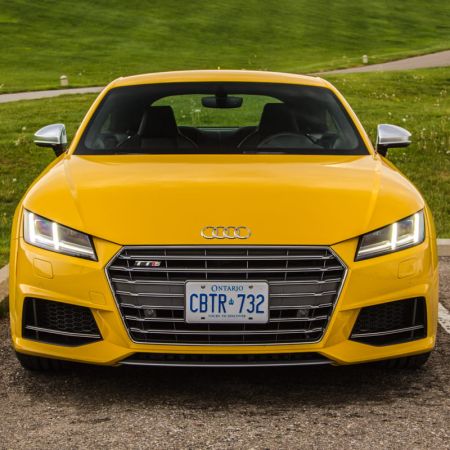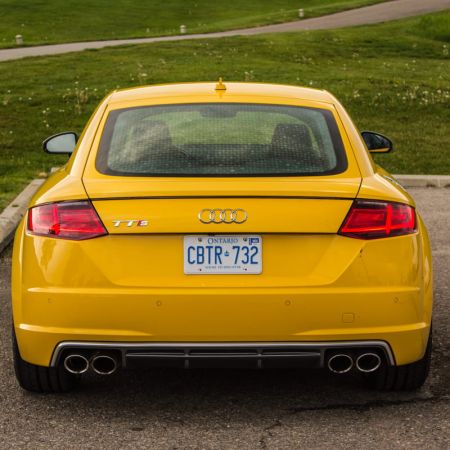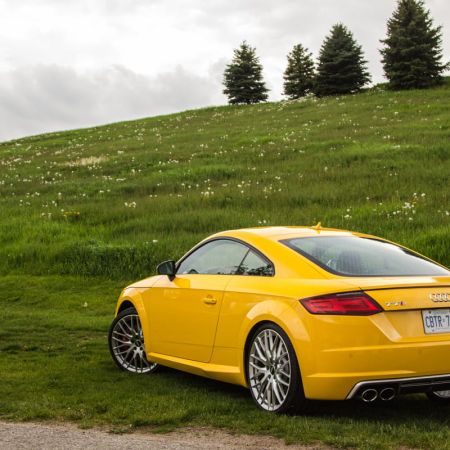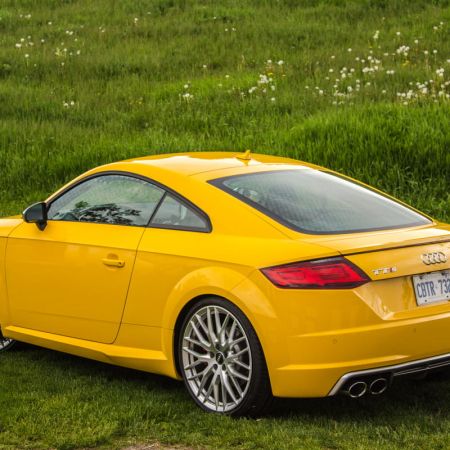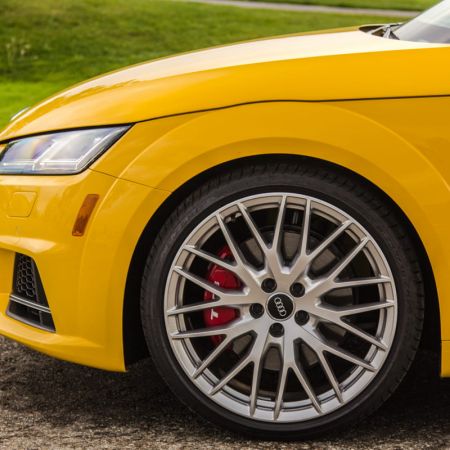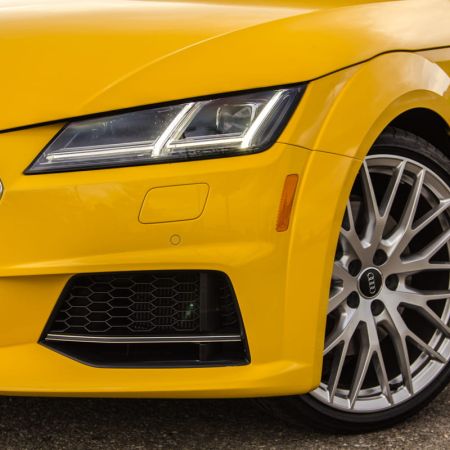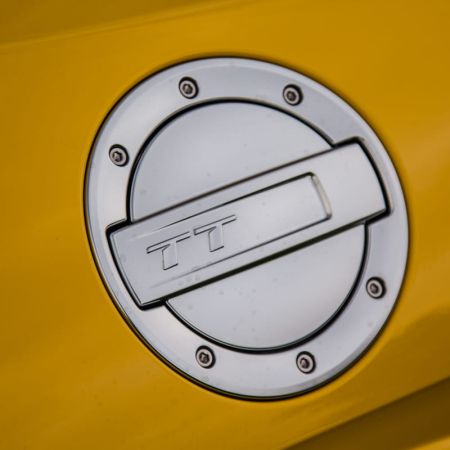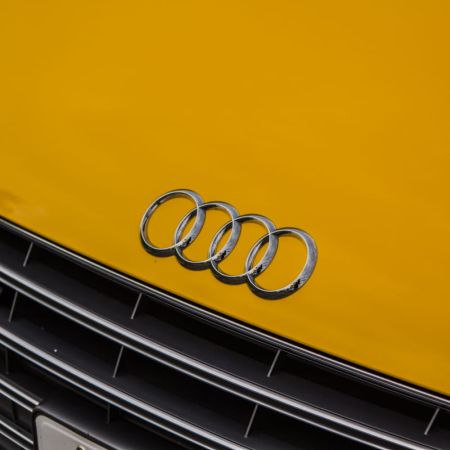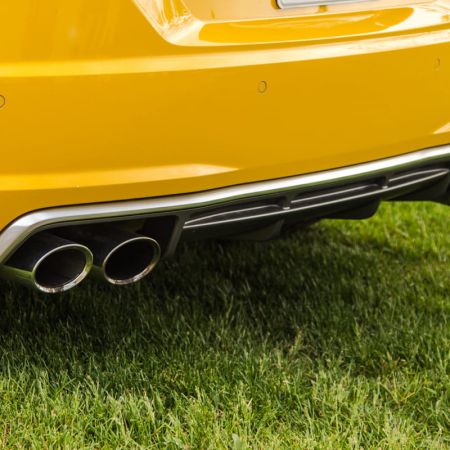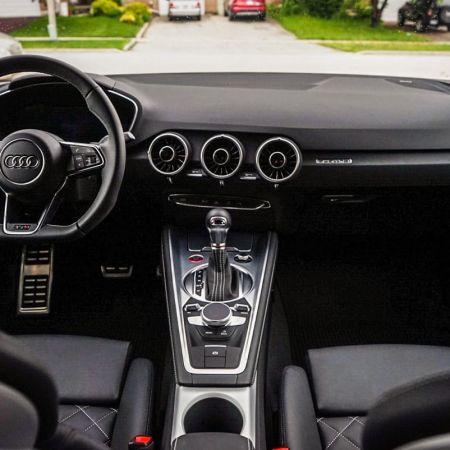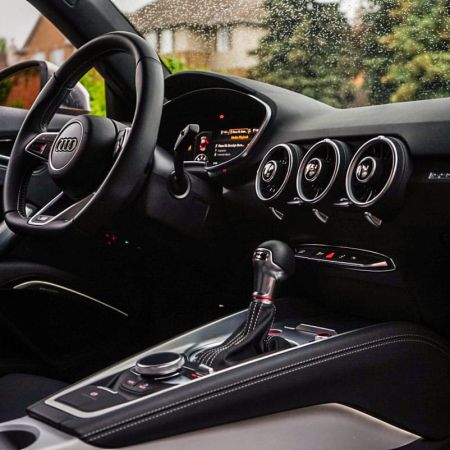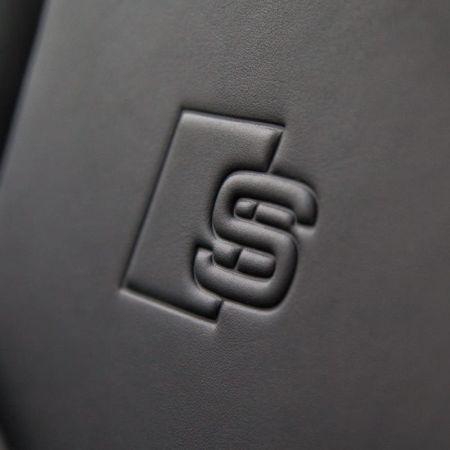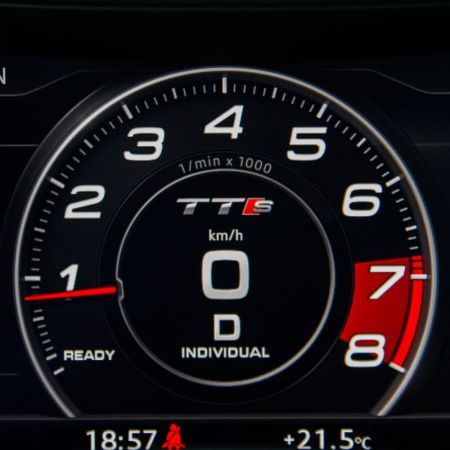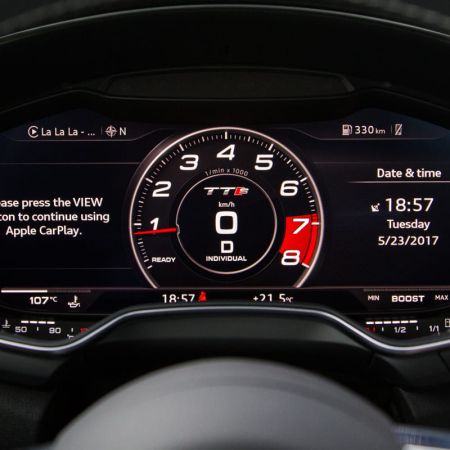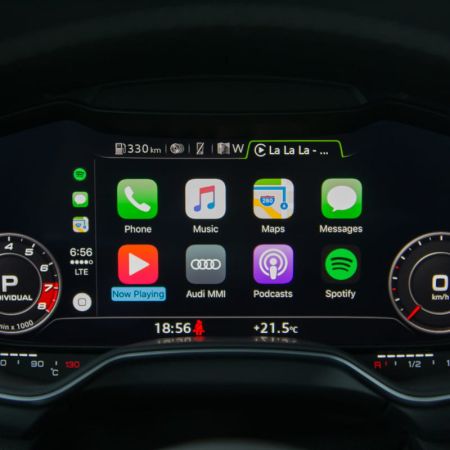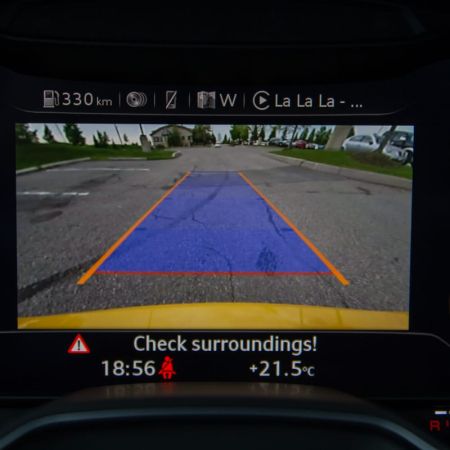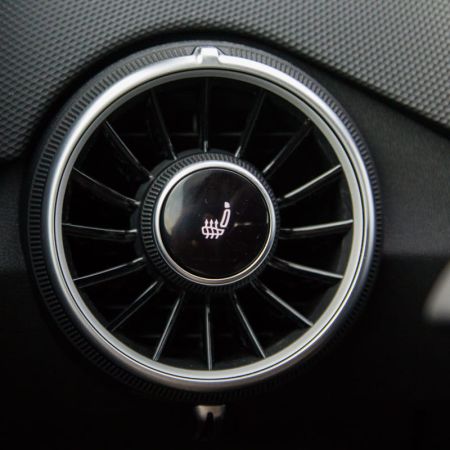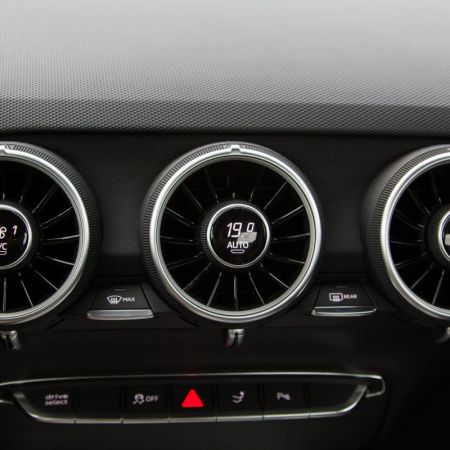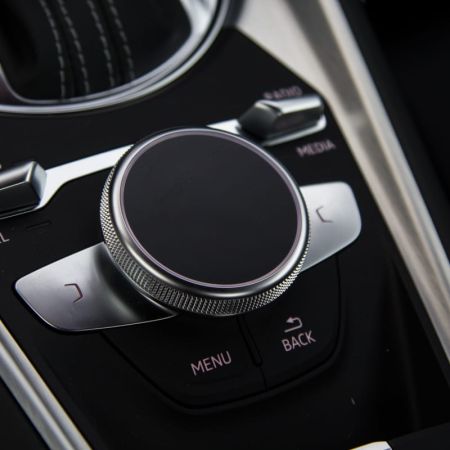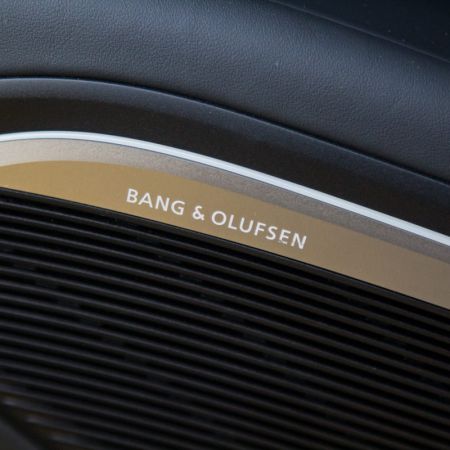The MQB platform has proven to be extremely versatile and successful for the Volkswagen Group. Underpinning the Golf (reviewed here) all the way up to the full-sized Atlas SUV, this platform represents modular vehicles with a transverse motor and front-drive layout, with an option to add all-wheel-drive. Trickling into the Audi lineup, MQB is the basis for the Audi A3 and the sporty TT coupé. This 2017 Audi TTS is a hopped-up version that gets a few additional upgrades both visual and mechanical, so we were sent a Vegas Yellow example for evaluation.
Audi first introduced the TT in 1997 as a 1998 model year vehicle, one that many perceived to be a slightly more premium version of the Volkswagen Beetle. Now in its third generation, the TT has developed its own identity and carved itself a niche market. With styling not unlike that of the Porsche 718 Cayman (reviewed here), the TTS is a low-slung 2+2 with unmistakable Audi cues. This tester came to us fully decked out with 20” Y-Spoke forged aluminum wheels ($800) and very in-your-face Vegas Yellow paint, bearing an $890 charge. The TT has LED lighting all around, with sequential rear turn signals that are quickly becoming an Audi trademark. An active rear spoiler deploys from the trunk at speed; it can also be extended and retracted at the touch of a button.
The TTS shares its powertrain with the Volkswagen Golf R, one of the best sporty vehicle values available today. It’s a EA888-series 2.0L turbocharged and intercooled inline four-cylinder, good for 292 horsepower at 6,200RPM and 280 lb-ft. of torque at 1,900RPM. The motor sends power to all four wheels using the quattro all-wheel-drive system, though it is still front-based like the Golf R (reviewed here). The TTS can sprint to 100km/h from a standstill in just 4.9 seconds, and onto a top speed of 249 km/h. It’s properly quick, but there is some turbo lag before the boost fully kicks in.
The chosen transmission here is the six-speed dual-clutch S-tronic gearbox, which bangs through the gears effortlessly and very quickly. Purists long for a manual, but the reality of the current automotive landscape is that dual-clutch boxes and even some traditional automatics are capable of putting power down better than any manual could. While doing this, efficiency is superior as well. The S-tronic box here has paddle shifters if the driver chooses to use manual mode, and the transmission behaves beautifully in the regular Sport setting as well.
Power delivery is fairly smooth, as this is one of the best turbo-fours around. Audi has been selling these motors for a while, and this particular application is one of the most rewarding to drive. The front bias leads to a little bit of understeer at the absolute limit, but the average driver not looking to push the car to ten-tenths won’t notice. Audi Drive Select adjusts parameters including engine/transmission mapping, steering weight, and suspension between Dynamic, Comfort, and Auto.
Steering feel is typical for a vehicle with electrically assisted power steering, but this Audi has a very technical, almost Teutonic way about the way it corners. It goes exactly where it’s pointed, with ample response from the chassis and some road feel through the tires. Ride quality is very, very firm through the magnetic ride suspension, and damping is excellent. Setting the car into the “Comfort” setting softens things up; many will find the ride in “Dynamic” mode a bit too harsh for everyday commuting. Average city potholes can become jarring and uncomfortable with the TTS in its sportiest setting.
Punchy and fun as it is, the TTS still remains relatively frugal on fuel if driven conservatively, mostly thanks to its light weight. Audi’s official ratings are 10.3L/100km city, 8.6L/100km highway, and a combined rating of 9.5L/100km. After a week of testing that included longer highway runs, spirited back road exploration, and regular commuting, the average for the car sat right at 9.8L/100km, right in line with the projections. The tank will hold 60L of fuel, and the TTS’ high compression and turbocharged motor requires 91-octane premium.
Step into the cabin of the TTS and it immediately reminds you of the car’s personal luxury/sports coupé nature. Things are well designed but headroom is lacking for taller folks, and despite the car being a 2+2, the rear seats are made for backpacks. Anybody with actual legs will find them to be a punishment. Still, the TTS has an excellent driving position, extremely comfortable seats, and adequate visibility, though there are some blind spots thanks to the design.
Technology is this car’s forté, like all newer Audis that have debuted in the last two years. The Virtual Cockpit digital instrument cluster is the centerpiece, and in the TT it’s unique because it’s the only screen. Its A4 (reviewed here) and Q7 siblings get a second screen, while the TT, like the R8 supercar (reviewed here), gets away with just the digital instrument cluster. It’s neat tech, incorporating navigation, audio controls, connectivity and vehicle information, but can be annoying if the passenger wants to take over audio controls.
The car also now gets Apple CarPlay, in the Virtual Cockpit. Other Audi models that have the secondary screen has the smartphone connectivity display in the center, but that isn’t an option here. We found CarPlay decently easy to navigate, but the fact that it’s right in front of the driver’s face can be distracting. Something that has stood out about the TT’s interior is the new Audi climate control design. Rather than clutter up the center stack, the climate buttons and temperature adjustment are neatly tucked into the vents themselves. The heated seat buttons are on the outboard vents, closest to the doors
Starting at $62,700, the TTS is definitely a premium vehicle with a premium cost. Add on the extras like the aforementioned 20” wheels, special paint, pneumatic side bolsters ($300), Driver Comfort Package ($1,400 for a smart key, reverse camera, blind spot assist, and park assist), Navigation Package ($2,200), Bang & Olufsen sound system ($950), red brake calipers ($400), and a few other odds and ends brings the price to just over $72,000. That’s not only a hefty sum, but it’s not even the most expensive TT! The TT RS with its brilliant turbo five-cylinder is the range topper, coming in at slightly more money.
The issue with the TTS is its fierce competition at the price point, and what the buyer’s specific priorities are. If you aren’t looking for a dedicated sports car, this one is just fine. However, start to look at what else is around, and things begin to get interesting. The BMW M2 (reviewed here) offers more power, a dedicated rear-drive platform, and your choice of a six-speed manual or dual-clutch gearbox for just over $61,000. Spice things up a little bit, and we approach the Porsche 718 Cayman. Starting at $62,700, the Cayman is one of the best driver’s cars around, and the specific one we tested had a sticker within a few hundred dollars of this TTS.
It may not make much sense from a technical and comparative standpoint, but the 2017 Audi TTS is a superb car. Delivering enough horsepower and torque to keep the enthusiast satisfied and handling that would even be satisfactory for the occasional weekend track day, this is also a spectacular daily driver. If passenger space isn’t high on the priority list, the Audi might be worth a serious look. Looking for a dedicated driver’s car with a bit less tech? Perhaps take a gander at the 718 Cayman, because if you want an M2, the waiting list is about two years right now.
2017 Audi TTS quattro Gallery
See Also:



